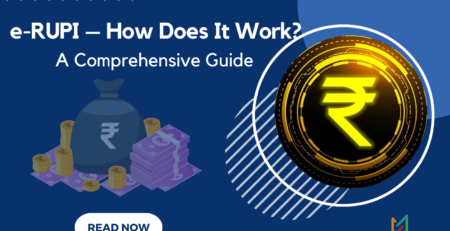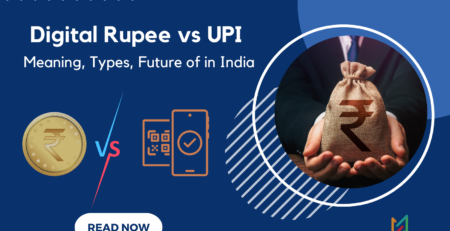Investment Returns Analysis: Gold, Silver, and Nifty Performance 2015-2025 with Future Market Outlook
Executive Summary
The decade spanning 2015-2025 has delivered remarkable investment returns across multiple asset classes, with precious metals and equity markets demonstrating exceptional performance. Gold has emerged as the standout performer with 220% returns, transforming an initial investment from ₹26,400 per 10 grams to ₹84,700. Silver followed closely with impressive 165% gains, rising from ₹35,000 per kilogram to ₹92,500. The Nifty index, representing India’s premier equity benchmark, delivered solid 191% returns, climbing from 8,100 points to 23,712 points.
This comprehensive investment returns analysis examines the driving factors behind these exceptional performances and provides strategic insights for the next decade (2025-2035). Understanding these trends is crucial for investors seeking to optimize their portfolios and capitalize on emerging market opportunities.
Detailed Performance Analysis: The Decade of Growth (2015-2025)
Gold Investment Performance: The Stellar 220% Journey
Gold’s extraordinary 220% return over the past decade represents one of the most significant precious metal bull runs in recent history. The precious metal’s price appreciation from ₹26,400 per 10 grams to ₹84,700 reflects multiple converging factors that created a perfect storm for gold investment performance.
The investment returns analysis reveals that gold’s exceptional performance was driven by several key catalysts. Global economic uncertainty, triggered by events such as Brexit, trade wars, the COVID-19 pandemic, and subsequent inflation concerns, drove investors toward safe-haven assets. Central banks worldwide adopted ultra-accommodative monetary policies, keeping interest rates near zero and implementing quantitative easing programs that devalued fiat currencies and enhanced gold’s appeal as a store of value.
Geopolitical tensions across various regions further amplified gold’s investment appeal. The precious metal traditionally serves as a hedge against political instability and currency debasement, making it an attractive portfolio diversification tool during turbulent times. Additionally, the gradual shift away from the US dollar as the sole global reserve currency enhanced gold’s role in international monetary systems.
Silver Market Trends: The 165% Surge
Silver’s remarkable 165% return trajectory from ₹35,000 per kilogram to ₹92,500 demonstrates the white metal’s dual nature as both a precious metal and an industrial commodity. This investment returns analysis highlights silver’s unique position in the market, benefiting from both safe-haven demand and industrial applications.
The silver market trends during this period were significantly influenced by the renewable energy revolution. Solar panel manufacturing, electric vehicle production, and electronic device proliferation drove substantial industrial demand for silver. The metal’s superior electrical conductivity properties made it indispensable in emerging technologies, creating a fundamental supply-demand imbalance that supported price appreciation.
Furthermore, silver’s historical price ratio to gold suggested it was undervalued for much of the early 2010s. The subsequent price correction, combined with investment demand from retail investors seeking affordable precious metal exposure, contributed to the strong 165% returns observed over the decade.
Nifty Index Returns: Equity Market Excellence at 191%
The Nifty index’s impressive 191% return, rising from 8,100 to 23,712 points, reflects India’s economic transformation and the maturation of its capital markets. This investment returns analysis underscores the importance of equity market exposure in long-term wealth creation strategies.
India’s GDP growth, demographic dividend, digital transformation initiatives, and structural reforms created a conducive environment for equity market performance. The implementation of goods and services tax (GST), bankruptcy and insolvency code, and various ease-of-doing-business reforms enhanced corporate governance and operational efficiency across sectors.
The technology sector’s expansion, financial services modernization, and consumer discretionary growth drove significant value creation for equity investors. Foreign institutional investment flows, supported by India’s inclusion in various global indices and its emerging market status, provided additional liquidity and valuation support.
Comparative Investment Returns Analysis: Risk-Adjusted Performance
When conducting a comprehensive investment returns analysis, risk-adjusted performance metrics provide crucial insights beyond absolute returns. Gold’s 220% return came with relatively lower volatility compared to equity markets, making it an excellent portfolio stabilizer. The precious metal’s negative correlation with equity markets during stress periods enhanced its diversification benefits.
Silver’s 165% return exhibited higher volatility than gold but offered superior upside potential during market rallies. The white metal’s industrial demand component introduced additional price drivers beyond traditional precious metal fundamentals, creating both opportunities and risks for investors.
The Nifty’s 191% return demonstrated the power of equity market participation in long-term wealth creation. However, this performance came with periodic corrections and higher volatility, requiring investors to maintain discipline during market downturns.
Market Drivers and Economic Fundamentals
Monetary Policy Impact on Investment Returns
Central bank policies played a pivotal role in shaping investment returns across all three asset classes. Ultra-low interest rates reduced the opportunity cost of holding non-yielding assets like precious metals while supporting equity valuations through lower discount rates. Quantitative easing programs increased money supply, creating inflation expectations that benefited real assets.
The Federal Reserve’s policy normalization attempts were repeatedly postponed due to economic headwinds, maintaining accommodative conditions that supported asset price appreciation. European Central Bank and Bank of Japan’s continued stimulus measures further reinforced the global easy money environment.
Inflation Hedge Characteristics
One crucial aspect of this investment returns analysis involves examining how different assets performed as inflation hedges. Gold’s 220% return significantly outpaced inflation rates, preserving and enhancing purchasing power for investors. Silver’s industrial demand component provided additional protection against supply chain inflation and commodity price increases.
Equity markets, represented by the Nifty’s 191% performance, demonstrated their ability to grow earnings and adapt to inflationary environments through pricing power and operational efficiency improvements.
Currency Debasement and Asset Appreciation
The global trend toward currency debasement through monetary expansion contributed significantly to asset price appreciation. As fiat currencies lost purchasing power, hard assets like precious metals and productive assets like equities commanded higher prices in nominal terms.
Future Market Outlook 2025-2035: Strategic Investment Positioning
Gold Investment Projections: Sustaining Momentum
Looking ahead to the next decade, gold investment performance appears poised for continued strength, albeit potentially at more moderate levels than the exceptional 220% returns witnessed in 2015-2025. Several structural factors support a bullish long-term outlook for precious metals investing.
Central bank gold purchases have accelerated globally as nations seek to reduce dollar dependence and diversify foreign exchange reserves. This institutional demand provides a stable foundation for gold prices, independent of retail investment flows. The ongoing de-dollarization trend, particularly among BRICS nations, suggests sustained official sector demand for gold as an alternative reserve asset.
Climate change concerns and environmental regulations may impact gold mining operations, potentially constraining supply growth and supporting higher prices. Additionally, the increasing correlation between geopolitical tensions and gold performance suggests that continued global uncertainties will maintain safe-haven demand.
Realistic projections for gold investment returns over 2025-2035 range from 80-120%, representing more normalized but still attractive appreciation potential. This outlook assumes continued monetary accommodation, moderate inflation levels, and persistent geopolitical uncertainties.
Silver Market Trends: Industrial Revolution Catalyst
Silver market trends for the coming decade appear exceptionally promising due to the accelerating energy transition and technological advancement. The metal’s critical role in solar panel manufacturing, electric vehicle charging infrastructure, and 5G network deployment suggests robust industrial demand growth.
The global push toward renewable energy targets and carbon neutrality commitments will require massive silver consumption for photovoltaic installations. Electric vehicle adoption, supported by government mandates and improving battery technology, will further boost silver demand for charging infrastructure and electronic components.
Investment returns analysis for silver projects potential gains of 100-150% over the next decade, supported by structural supply deficits and increasing industrial consumption. However, silver’s higher volatility compared to gold requires careful position sizing and risk management.
Nifty Index Future Performance: India’s Growth Story
The Nifty index’s future performance trajectory appears constructive, supported by India’s favorable demographic profile, digital transformation momentum, and structural economic reforms. The next decade represents a critical period for India’s transition from a middle-income to a developed economy.
Sectoral rotation toward technology, healthcare, financial services, and renewable energy is expected to drive earnings growth and market expansion. The government’s infrastructure development initiatives, manufacturing incentives, and ease-of-doing-business improvements should enhance corporate profitability and attract foreign investment.
Conservative projections suggest Nifty returns of 120-160% over 2025-2035, assuming sustained GDP growth rates of 6-7% annually and moderate earnings expansion. However, investment returns analysis must account for potential volatility from global economic cycles and domestic policy uncertainties.
Portfolio Allocation Strategies for Optimal Investment Returns
Strategic Asset Allocation Framework
Based on this investment returns analysis, optimal portfolio construction for 2025-2035 should incorporate lessons learned from the previous decade’s performance. A balanced approach combining precious metals exposure with equity market participation offers the best risk-adjusted return potential.
Recommended allocation ranges include 15-25% precious metals (with a 60-40 gold-to-silver ratio), 50-65% equity exposure through diversified index funds or individual stock selection, and 15-25% in bonds or alternative investments for stability and income generation.
This allocation framework recognizes precious metals’ portfolio diversification benefits while maintaining sufficient equity exposure to participate in long-term economic growth. The specific allocation within these ranges should reflect individual risk tolerance, investment horizon, and income requirements.
Dynamic Rebalancing Methodology
Successful investment returns optimization requires systematic rebalancing to maintain target allocations and capture volatility-driven opportunities. Quarterly rebalancing schedules help investors lock in gains from outperforming assets while adding to underperforming positions at attractive valuations.
The investment returns analysis suggests that disciplined rebalancing would have enhanced portfolio performance during 2015-2025, particularly during periods when asset class performance diverged significantly. This approach also helps manage behavioral biases that often lead to suboptimal investment decisions.
Risk Factors and Market Vulnerabilities
Precious Metals Investment Risks
While gold and silver delivered exceptional investment returns over 2015-2025, future performance faces several potential headwinds. Rising real interest rates could reduce precious metals’ relative attractiveness compared to yield-bearing assets. Technological disruptions in mining or recycling could alter supply dynamics unpredictably.
Additionally, cryptocurrency adoption among younger investors might reduce traditional safe-haven demand for precious metals. Central bank digital currencies (CBDCs) could also impact gold’s role as an alternative monetary system, though this effect remains speculative.
Equity Market Vulnerabilities
The Nifty’s strong performance during 2015-2025 has elevated valuations across many sectors, potentially limiting future return potential. Investment returns analysis must consider the possibility of mean reversion after extended periods of outperformance.
Rising interest rates, inflation persistence, or global economic slowdowns could negatively impact equity market performance. Additionally, India’s integration with global markets exposes domestic equities to international volatility and capital flow reversals.
Technology and Innovation Impact on Investment Returns
Digital Transformation and Asset Classes
The next decade’s investment returns will be significantly influenced by technological disruption across traditional asset classes. Blockchain technology and tokenization may create new investment vehicles and alter traditional precious metals trading mechanisms.
Artificial intelligence and machine learning applications in portfolio management and risk assessment could improve investment returns through enhanced decision-making and execution efficiency. However, these technologies may also increase market correlation and reduce diversification benefits during stress periods.
Sustainable Investing and ESG Considerations
Environmental, social, and governance (ESG) factors are increasingly influencing investment returns across all asset classes. Companies and assets that align with sustainability objectives may command premium valuations, while those failing to adapt face potential devaluation.
This trend suggests that investment returns analysis must incorporate ESG metrics alongside traditional financial measures. Precious metals mining companies with strong environmental practices and equity investments in sustainable businesses may outperform peers focusing solely on financial metrics.
Global Economic Scenarios and Impact Assessment
Base Case Scenario: Moderate Growth and Controlled Inflation
Under this scenario, global economic growth continues at moderate 2-3% annually, with central banks successfully managing inflation around 2-3% targets. Investment returns would likely moderate from 2015-2025 levels but remain positive across asset classes.
Gold might appreciate 80-100% over the decade, supported by steady monetary accommodation and persistent geopolitical uncertainties. Silver could deliver 100-120% returns driven by industrial demand growth exceeding supply expansion. The Nifty index might achieve 120-140% returns supported by India’s structural growth drivers.
Optimistic Scenario: Accelerated Growth and Innovation
This scenario assumes breakthrough technological innovations drive productivity gains and economic acceleration. Successful resolution of major geopolitical conflicts and enhanced international cooperation boost global trade and investment flows.
Under these conditions, equity markets could outperform significantly, with Nifty potentially delivering 180-220% returns. Precious metals might underperform slightly due to reduced safe-haven demand but still provide positive returns of 60-80% for gold and 80-100% for silver.
Pessimistic Scenario: Economic Stagnation and Crisis
This scenario involves prolonged economic stagnation, currency crises, or major geopolitical conflicts. Investment returns would be heavily skewed toward safe-haven assets, with precious metals potentially outperforming significantly.
Gold could appreciate 150-200% under these conditions, while silver might gain 120-160% despite reduced industrial demand. Equity markets would likely struggle, with Nifty potentially delivering subdued returns of 40-80% over the decade.
Sector-Specific Investment Opportunities
Technology and Digital Economy
The technology sector’s continued expansion represents a significant opportunity for investment returns enhancement. Artificial intelligence, cloud computing, cybersecurity, and digital payments infrastructure are poised for substantial growth over the next decade.
Investment returns analysis suggests that technology-focused equity investments could outperform broader market indices. However, valuation discipline and diversification remain crucial given the sector’s historical volatility.
Renewable Energy and Sustainability
The global energy transition creates substantial investment opportunities in renewable energy infrastructure, energy storage technologies, and electric vehicle ecosystems. These sectors may deliver superior investment returns while supporting portfolio ESG objectives.
Silver’s role in solar panel manufacturing positions it advantageously within this theme, potentially enhancing its investment returns relative to gold over the coming decade.
Healthcare and Biotechnology
Aging global demographics and medical technology advancement support long-term growth prospects for healthcare investments. This sector offers defensive characteristics during economic downturns while providing exposure to innovation-driven growth.
Investment returns in healthcare-focused strategies may prove more resilient during market volatility while participating in secular growth trends.
Risk Management and Portfolio Protection
Volatility Management Techniques
Effective investment returns optimization requires sophisticated risk management approaches. Position sizing based on volatility targeting helps maintain consistent risk exposure across different market environments.
Options strategies, including protective puts and covered calls, can enhance risk-adjusted investment returns while providing downside protection. However, these techniques require active management and may not be suitable for all investors.
Correlation Analysis and Diversification
The investment returns analysis reveals that asset class correlations can shift dramatically during crisis periods, potentially reducing diversification benefits when they’re most needed. Dynamic correlation monitoring and adaptive asset allocation strategies help maintain portfolio resilience.
Alternative investments, including real estate investment trusts (REITs), commodities beyond precious metals, and international equity exposure, can enhance portfolio diversification and improve long-term investment returns.
Economic Cycles and Timing Considerations
Business Cycle Positioning
Understanding economic cycles’ impact on different asset classes is crucial for optimizing investment returns. Precious metals typically outperform during late-cycle periods when inflation concerns mount and growth slows. Equity markets generally excel during early and mid-cycle phases when earnings growth accelerates.
The current economic environment’s position within the business cycle influences optimal asset allocation decisions and expected investment returns over various time horizons.
Seasonal and Cyclical Patterns
Historical analysis reveals seasonal patterns in precious metals and equity markets that can influence short-term investment returns. Gold often strengthens during autumn months due to jewelry demand in Asia, while equity markets tend to perform better during certain calendar periods.
While these patterns shouldn’t drive major allocation decisions, awareness of cyclical tendencies can inform tactical positioning and entry/exit timing for active investors.
Global Market Integration and Cross-Border Flows
International Capital Flows Impact
India’s increasing integration with global markets means that international capital flows significantly influence domestic investment returns. Foreign institutional investor sentiment toward emerging markets affects Nifty performance, while global precious metals demand influences Indian gold and silver prices.
Understanding these linkages helps investors anticipate potential volatility sources and position portfolios accordingly. Currency hedging strategies may become increasingly important for rupee-based investors with significant precious metals exposure.
Trade Policy and Tariff Implications
Trade policies and tariff structures can materially impact investment returns across different asset classes. Import duties on precious metals affect domestic pricing dynamics, while trade agreements influence equity market performance through their impact on corporate earnings.
The investment returns analysis suggests that policy-aware investing will become increasingly important as governments use trade policy as economic and geopolitical tools.
Future Investment Themes and Emerging Opportunities
Artificial Intelligence and Automation
The AI revolution represents perhaps the most significant technological shift since the internet’s advent. Companies successfully implementing AI technologies may deliver exceptional investment returns, while those failing to adapt could see their competitive positions erode.
This transformation will likely create both winners and losers across sectors, making careful selection crucial for optimizing investment returns in equity markets.
Climate Change Adaptation
Climate change mitigation and adaptation represent massive investment themes for the coming decade. Infrastructure resilience, water management, sustainable agriculture, and carbon capture technologies offer substantial growth potential.
These themes may influence precious metals demand through their impact on mining operations and industrial applications, while creating new equity market opportunities for forward-thinking investors.
Demographic Transitions
Global demographic shifts, including aging populations in developed markets and youth bulges in emerging economies, create distinct investment opportunities. Healthcare, education, entertainment, and financial services sectors may benefit disproportionately from these trends.
Investment returns analysis suggests that demographic-aware investing strategies could outperform broad market approaches over the next decade.
Practical Implementation Strategies
Dollar-Cost Averaging and Systematic Investment
For investors seeking to replicate or improve upon the investment returns achieved during 2015-2025, systematic investment approaches offer significant advantages. Dollar-cost averaging into precious metals and equity markets helps smooth volatility and reduce timing risk.
Monthly or quarterly investment schedules have historically delivered superior risk-adjusted returns compared to lump-sum investing, particularly during volatile market periods.
Tax-Efficient Investment Structures
Optimizing after-tax investment returns requires careful consideration of tax implications across different asset classes. Precious metals investments may face different tax treatment compared to equity investments, affecting net returns for investors.
Understanding tax-efficient investment structures, including retirement account optimization and harvest loss strategies, can significantly enhance long-term wealth accumulation.
Conclusion: Positioning for the Next Decade
The exceptional investment returns delivered during 2015-2025 across gold (220%), silver (165%), and Nifty (191%) markets provide valuable insights for future investment strategy development. While repeating these exact performance levels may prove challenging, understanding the underlying drivers offers guidance for the next decade.
Successful investment returns optimization for 2025-2035 will require balanced exposure across asset classes, recognition of changing market dynamics, and adaptation to emerging investment themes. Precious metals retain their portfolio diversification value and inflation protection characteristics, while equity markets continue offering the best long-term wealth creation potential.
The key to superior investment returns lies not in predicting the future with certainty but in positioning portfolios to benefit from multiple scenarios while managing downside risks. The lessons learned from 2015-2025 performance provide a roadmap for navigating the opportunities and challenges ahead.
Investors who maintain discipline, embrace diversification, and remain adaptable to changing market conditions are best positioned to achieve attractive investment returns over the coming decade. The foundation laid by the previous decade’s exceptional performance creates opportunities for continued wealth creation, provided investors approach the markets with both optimism and prudent risk management.
This investment returns analysis demonstrates that patient, well-diversified investors can achieve substantial wealth accumulation over extended time horizons. The next decade promises its own unique opportunities and challenges, requiring investors to remain informed, flexible, and committed to their long-term financial objectives.











